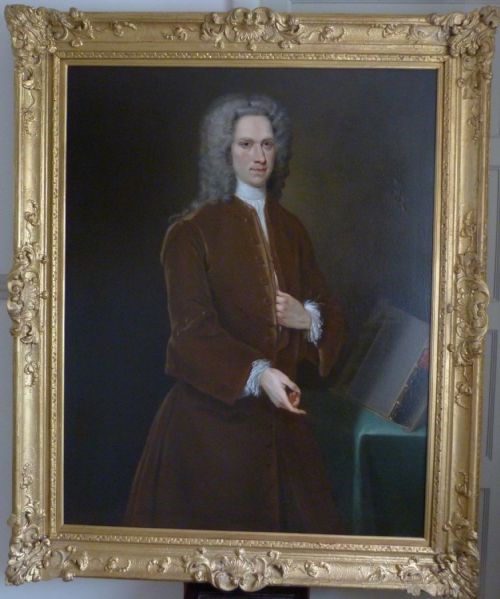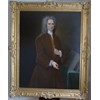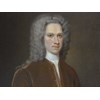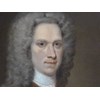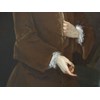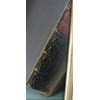Portrait of Dr. John Wigan c.1732; Circle of Jonathan Richardson.
By Roy Precious From United Kingdom
| Shipping Destination | Single Item | Additional Items |
|---|
The estimated delivery time is (Mon-Fri) until the seller will dispatch the item. Actual delivery time will depend on your delivery location
Oil on canvas in a 19th century ornate frame.
Dr. JOHN WIGAN (31 January 1696 – 5 December 1739) was a prominent British physician, poet and author of the early eighteenth century whose writings and translations were popular and widely referred to during the period. He served as principal of New Inn Hall at Oxford University between 1726 and 1732 and was physician of Westminster Hospital between 1733 and 1738. In 1738 he travelled to Jamaica with Edward Trelawny and died there a year later in December 1739.
John Wigan was born in 1696, the son of William Wigan, rector of Kensington. At 14, Wigan was admitted to Westminster School and from there moved to Christ Church, Oxford where he obtained his BA, MA And MD.
In 1726, during his final year of studies he was made principal of New Inn Hall and was already a celebrated writer on medical topics and poet.
His 1723 translation of the works of Aretaeus of Cappadocia was widely remarked on and was used as the basis of Herman Boerhaave's work on the same topic. His poetry was well received and was published in the "Carmina quadragesimalia" and elsewhere.
In 1731, Wigan was admitted to the Royal College of Surgeons and moved to Craig's Court in London. In 1733 he was elected to the post of physician at Westminster Hospital which he retained until 1738, when he travelled to Jamaica with old friend Edward Trelawny. Trelawny settled in Spanish Town, and Wigan married Mary Wheeler, daughter of planter John Douce soon afterwards. The couple had one daughter. In late 1739, Wigan died at Spanish Town and was buried under a black marble slab at St Catherine's Cathedral Church.
A portrait of his daughter Mary Trelawney Wigan was sold on this website and can be seen in 'portraits sold'.
Another version of this portrait is in the Primary Collection of the National Portrait Gallery, purchased in 1967, inventory no. NPG 4588.
In this portrait Wigan gestures towards a book on his left, this is the complete edition of John Freind's Latin works, with a Latin translation of the History of Physic, edited by Dr. John Wigan, and published in London in 1732. Parts of the words "Freind" and "Opera" can just be seen, i.e. "The Work of Freind".
(Freind, in 1716, had become a fellow of the Royal College of Physicians, delivered the Goulstonian Lectures in 1717, was chosen one of the censors in 1718 and Harveian orator in 1720. In 1722 he entered the House of Commons as Member of Parliament for Launceston in Cornwall; but, being suspected of favouring the cause of the exiled Stuarts, he spent half of that year in the Tower.
During his imprisonment he conceived his major work, The History of Physic, of which the first part appeared in 1725, and the second in the following year. Included in this volume was a paper by Dr. Henry Levett, also written in Latin, addressing the treatment of smallpox.
In 1726 Freind was appointed physician to Queen Caroline, an office which he held till his death.)
JONATHAN RICHARDSON, 1665–1745 (sometimes called "the Elder" to distinguish him from his son) was an English artist, collector of drawings, and writer on art, working almost entirely as a portrait-painter in London.
In 1731 he was considered by some art-critics as one of the three foremost painters of his time with Charles Jervas and Michael Dahl. He was the master of Thomas Hudson and George Knapton.
SIZE: 59 x 48.5 inches inc. frame.
PROVENANCE: by descent in a Yorkshire Private Collection.
Verso. Old handwritten label "Dr. John Wigan. ob. 1739"

-
Roy Precious
United Kingdom
We specialise in portraits from the 16th to the early 20th century, we also stock some 17th and 18th century ship paintings, furniture of the 17th and 18th centuries, and other artefacts dating from 200 B.C. to the 20th century.We have sold to many important collections including The Historic Royal Palaces collection and The Yale Center for British Art. Viewing is by appointment, or an arrangement can be made for the item to be brought to your home for inspection.


